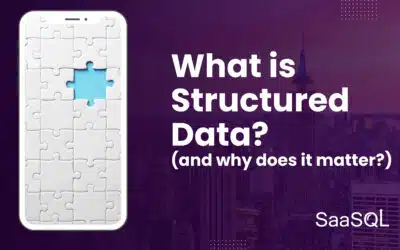What is Google Ad Words?
Google Ad Words, now known as Google Ads, is an online advertising platform developed by Google. It allows businesses to display their ads on Google’s search engine results page (SERP) and the Google Display Network. Advertisers bid on specific keywords, and when users search for these keywords, the ads are displayed. Advertisers are charged based on the pay-per-click (PPC) model, meaning they only pay when someone clicks on their ad.

How Does Google Ads Work?
-
Keyword Research: Advertisers research and select keywords relevant to their business. These keywords trigger the display of their ads when users search for them on Google.
- Ad Creation: Advertisers create compelling ads with catchy headlines, concise descriptions, and relevant URLs. Google provides different ad formats, including text ads, display ads, video ads, and more.
- Bidding and Budgeting: Advertisers set a maximum bid, which is the highest amount they are willing to pay for a click on their ad. They also set a daily or monthly budget to control their overall spending.
- Ad Auction: When a user searches for a keyword, Google runs an ad auction to determine which ads to display. The auction considers bid amount, ad quality, and relevance to the user’s query.
- Ad Rank and Ad Position: Ad Rank is calculated based on the bid amount, ad quality (measured by the Quality Score), and ad extensions. Ads with higher Ad Rank are more likely to appear in top positions on the SERP.
- Ad Display: When a user’s search matches the selected keywords, Google displays relevant ads at the top or bottom of the search results page.
Why is Google Ads Valuable?
-
Targeted Advertising: Google Ads allows precise targeting based on keywords, location, device, demographics, and more. This precision helps businesses reach their ideal audience.
- Measurable Results: Google Ads provides detailed analytics, allowing advertisers to track clicks, conversions, and other valuable metrics. This data helps in measuring the campaign’s effectiveness and ROI.
- Immediate Results: Unlike traditional marketing methods, Google Ads delivers instant visibility. Ads can go live within minutes, enabling businesses to attract customers promptly.
- Flexible Budgeting: Advertisers can set and adjust their budgets according to their financial capabilities. There are no minimum spending requirements, making it accessible to businesses of all sizes.
How is Google Ads Different from Traditional Marketing?
- Cost Structure: Traditional marketing often involves substantial upfront costs for ad placement, regardless of its effectiveness. In contrast, when Google Ad Words launched, it was a game changing pay-per-click model that ensured advertisers pay only for actual user engagement.
- Targeting Precision: Google Ads offers highly targeted advertising, allowing businesses to reach specific demographics, interests, and online behaviors. Traditional methods may lack this level of precision.
- Real-time Optimization: With Google Ads, advertisers can analyze campaign performance in real time and make instant adjustments to improve outcomes. Traditional marketing campaigns often require weeks or months to assess effectiveness and make changes.
- Global Reach: Google Ads provides a platform for businesses to reach a global audience, breaking down geographical barriers. Traditional marketing methods, especially for small businesses, might be limited to local or regional reach.
Historical Evolution and Current Usage
- Inception (2000): Google Ad Words was launched, allowing businesses to bid on keywords for ad placements in search results.
- Introduction of Ad Extensions (2009): Google Ad Words introduced ad extensions, enabling advertisers to include additional information like phone numbers, site links, and location in their ads.
- Transition to Google Ads (2018): Google rebranded Ad Words as Google Ads to encompass a broader range of advertising options, including YouTube, Maps, and Google Play.
- Current Trends: Google Ads continues to evolve, incorporating machine learning and AI technologies for improved targeting, ad personalization, and automation. Video and mobile advertising are gaining prominence, reflecting the changing user behavior patterns.
Improvements and Future Developments
- AI and Machine Learning: Google Ad Words began incorporating Machine Learning into their self-service platform nearly 10 years ago. Now, Google Ads is increasingly leveraging AI to optimize bidding strategies, target the right audience, and enhance ad relevance. Expect further advancements in AI-driven ad creation and performance prediction.
- Automation: Enhanced automation features allow advertisers to streamline campaign management. Smart bidding strategies and automated ad suggestions help businesses achieve better results with less manual effort. Cross Channel Marketing Solutions are a key example of advancements in this bidding automations.
- Interactive Ads: Interactive and immersive ad formats, such as augmented reality (AR) and playable ads, are likely to become more prevalent, providing engaging experiences for users.
- Privacy and Data Protection: With growing concerns about user privacy, expect Google Ads to adapt to stricter regulations, ensuring advertisers can still target effectively while respecting user privacy preferences.
Technologies Enabling Google Ads
- Google Ads API: Provides programmatic access to Google Ads, allowing developers to create powerful and customized applications for managing advertising campaigns.
- Google Analytics: Integrating Google Ads with Google Analytics provides deeper insights into user behavior, allowing businesses to make data-driven decisions.
- Mobile and Cross-Device Targeting: Technologies like geolocation and cross-device tracking enable advertisers to target users based on their mobile devices’ location and behavior across different platforms.
Google Ad Words (Google Ads): Wrapping Up
In summary, Google Ads is a dynamic and versatile advertising platform that has transformed the marketing landscape. Its precision, measurability, and adaptability make it an essential tool for businesses seeking effective online visibility. As technology continues to advance, Google Ads is poised to offer even more sophisticated features, ensuring advertisers can connect with their target audience in innovative and impactful ways. Whether you’re a small local business or a multinational corporation, Google Ads offers the tools and insights needed to drive successful online marketing campaigns.







